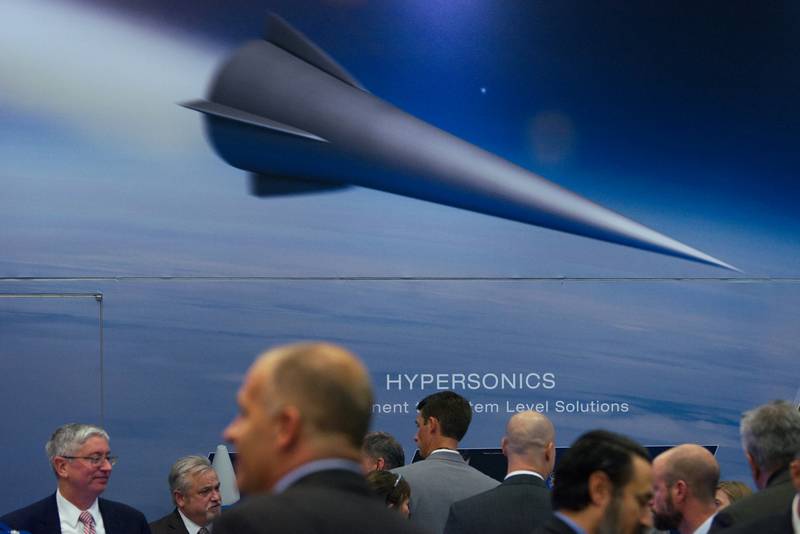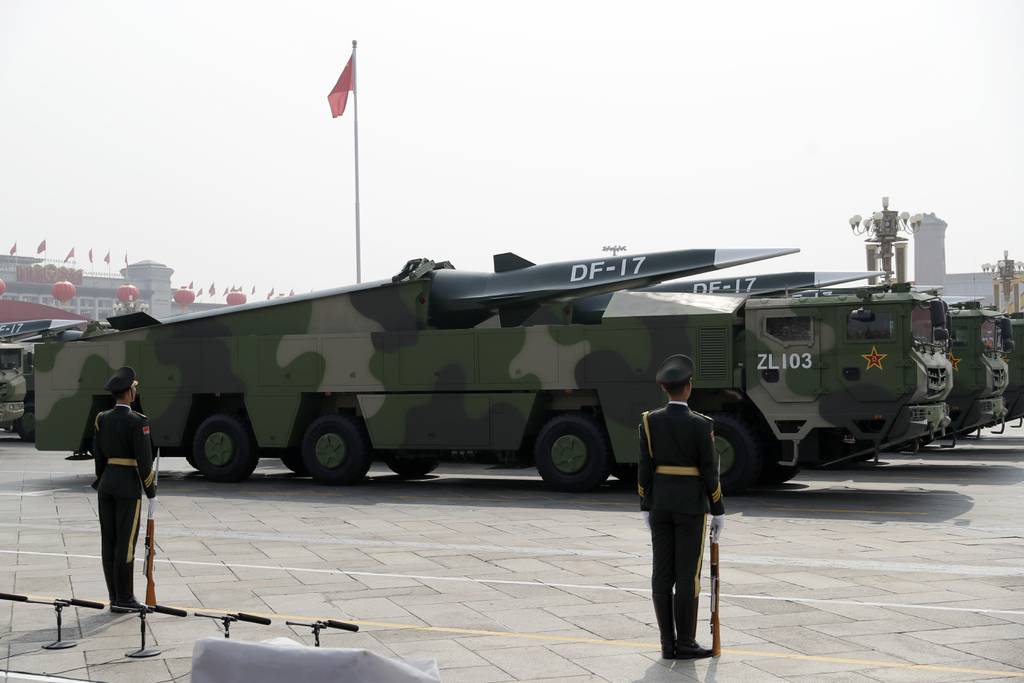The Pentagon warned in its annual report to Congress last year that China already possesses “the world’s leading hypersonic arsenal” and is sprinting to field even more advanced offensive capabilities. These weapons would give Beijing a capability to conduct a prompt strike that paralyzes America’s command-and-control and missile-defense capabilities.
The good news is that the United States is making progress on its own offensive hypersonic weapons. The bad news is that American efforts to develop systems that can defend against Chinese hypersonic capabilities are not keeping pace. If Washington does not act quickly to expedite the Pentagon’s fielding of hypersonic missile defense capabilities, deterrence may fail in the Pacific.
A hypersonic weapon is a missile that travels at speeds above Mach 5, or greater than 1 mile per second. There are many existing ballistic missile systems that travel at hypersonic speeds, but Chinese hypersonic missiles present an additional challenge. In addition to their high speeds, these systems include hypersonic glide vehicles, which maneuver through the atmosphere after an initial ballistic launch phase. To make matters worse, Beijing is also developing hypersonic cruise missiles that use air-breathing engines such as scramjets to reach high speeds and maneuver.
That combination of speed and maneuverability presents a daunting challenge for existing U.S. ballistic and cruise missile defense radars and interceptors, making it difficult to track and destroy the adversary’s incoming glide vehicle or cruise missile. The fact that hypersonic glide vehicles can also operate at unusual altitudes — well above cruise missiles but below ballistic missiles — adds an additional layer of complexity.
RELATED

China has several hypersonic variants that leverage their extensive work in both intercontinental and intermediate-range ballistic missiles. That includes, for example, the deployed DF-17, a medium-range ballistic missile with a hypersonic glide vehicle that has a reported range of 1,600 kilometers. Beijing could use that system to target American and allied military bases and fleets in the Pacific.
To match China’s effort, the United States has spent more than $8 billion on offensive hypersonic missile development over the past two years alone. Despite delays and challenges, some of these efforts are making headway. The Army’s Long-Range Hypersonic Weapon, the Air Force’s Hypersonic Attack Cruise Missile, and the Navy’s Conventional Prompt Strike and Hypersonic Air-Launched Offensive Anti-Surface Warfare programs could all field weapons this decade.
Unfortunately, America’s hypersonic defense efforts are not nearly as impressive.
The Missile Defense Agency has invested in developing a glide-phase interceptor to destroy adversarial missiles in their vulnerable glide phase, before they start complex maneuvering in the terminal phase. But the Biden administration only asked for $209 million for hypersonic defense programs in its fiscal 2024 budget request, and the Pentagon requested less than $515 million in funding in fiscal 2022 and fiscal 2023 combined.
These requests are a fraction of the funding dedicated to offensive capabilities and well short of what is required. This failure to prioritize hypersonic defense has consequences: The Department of Defense said in April that it did not expect to field a hypersonic defense system until fiscal 2034.
That delay creates unacceptable risk for American forces and invites aggression.
So what’s going on?
In part, it appears that out of an abundance of caution dissonant with the urgency of the threat that Americans confront, as well as a perennial fear of acquisition failure, the Pentagon has delayed a decision to select one defense company to begin an operational test and development effort that could lead to a functional deployed system before the end of the decade.
The Pentagon may be delaying this so-called downselect decision until a second program can be brought into a full competition, adding years of delay. That’s a mistake. If there is any current research and development effort that warrants risk taking, hypersonic missile defense is it.
Deputy Secretary of Defense Kathleen Hicks has emphasized in recent months that the Pentagon is prioritizing efforts to field key combat capabilities, especially when it comes to closing the gap with China in key emerging technology areas. But some are concerned that is more rhetorical than reality.
Thankfully, Congress has stepped in to begin to address this challenge. In this year’s National Defense Authorization Act, Congress directed MDA to achieve an initial operating capability for a glide-phase intercept system by 2029 and authorized an additional $225 million in research and development funding for 2024, more than doubling the amount the administration requested.
As the congressional appropriators conference their different versions of the defense bill, they should appropriate the full authorized amount. Then the DoD needs to quickly select one company for a rapid acquisition effort as soon as feasible. If the Pentagon believes that decision alone is too risky, it could also fund a second research and development effort that delivers in the 2030s.
As the DoD develops its 2025 missile defense budget request, it should reflect these increased investments and not rely once again on congressional intervention, which would only cause additional delay.
Most strategists understand that a military can best deter aggression by fielding both capable offensive and defensive systems. After all, offensive capabilities force the potential aggressor to consider costly counterpunches the aggression may invite, and defensive capabilities create uncertainty as to whether the aggression can achieve its military objectives. Individually, these offensive and defensive capabilities are significant deterrents, but together they are much more effective. That’s why Washington should prioritize hypersonic missile defense before it is too late.
Retired U.S. Navy Rear Adm. Mark Montgomery is a senior fellow at the Foundation for Defense of Democracies think tank. He previously served as policy director of the Senate Armed Services Committee under Sen. John McCain, R-Ariz., and as director of operations (J3) at U.S. Pacific Command. Bradley Bowman is the senior director of the Center on Military and Political Power at FDD. He previously served as a national security adviser to members of the Senate Armed Services and Foreign Relations committees, and was an officer in the U.S. Army.








